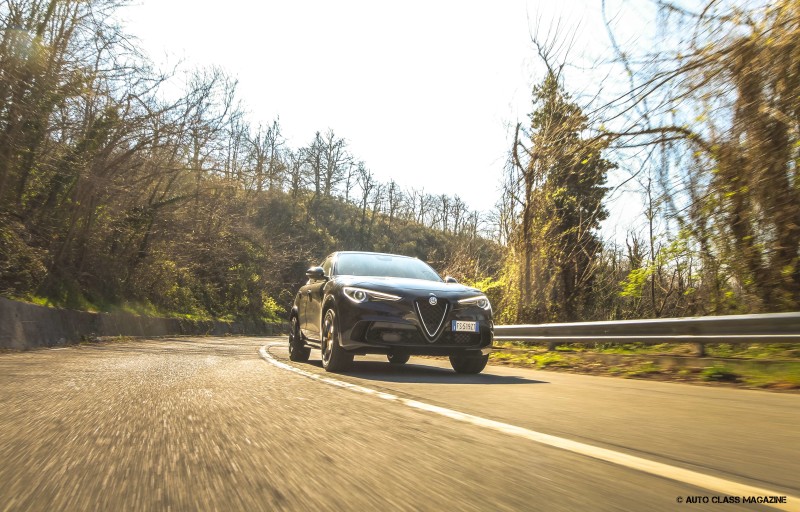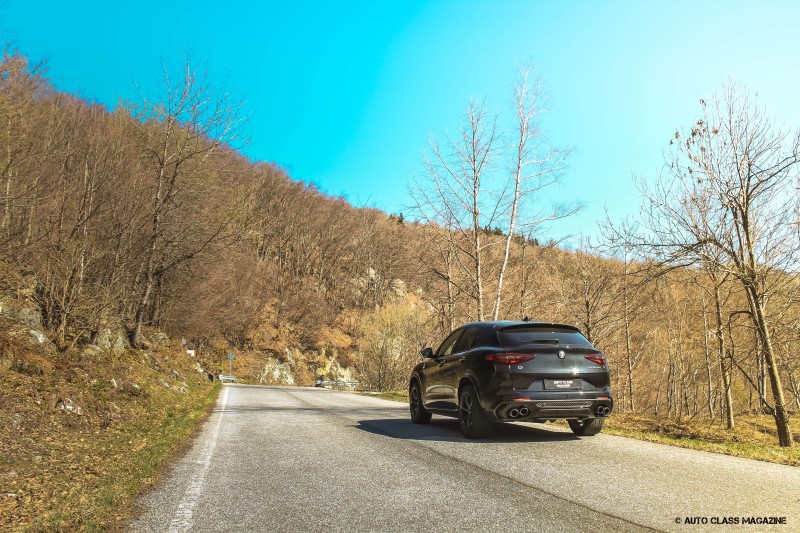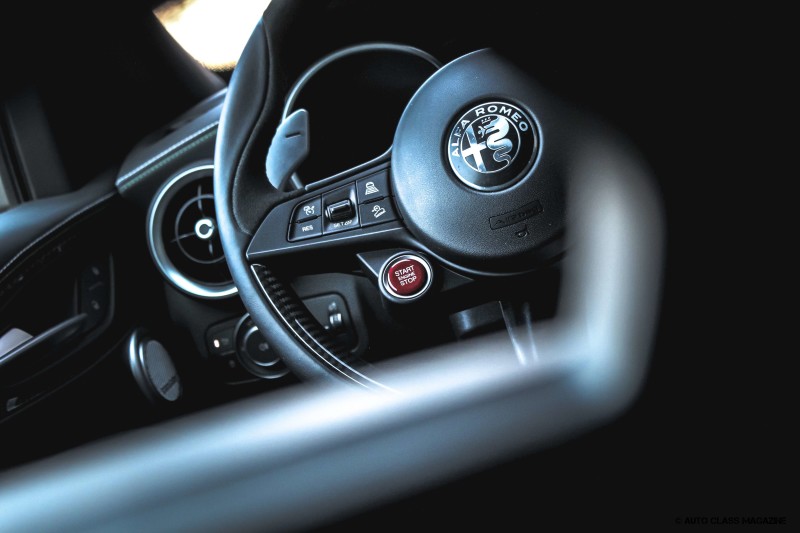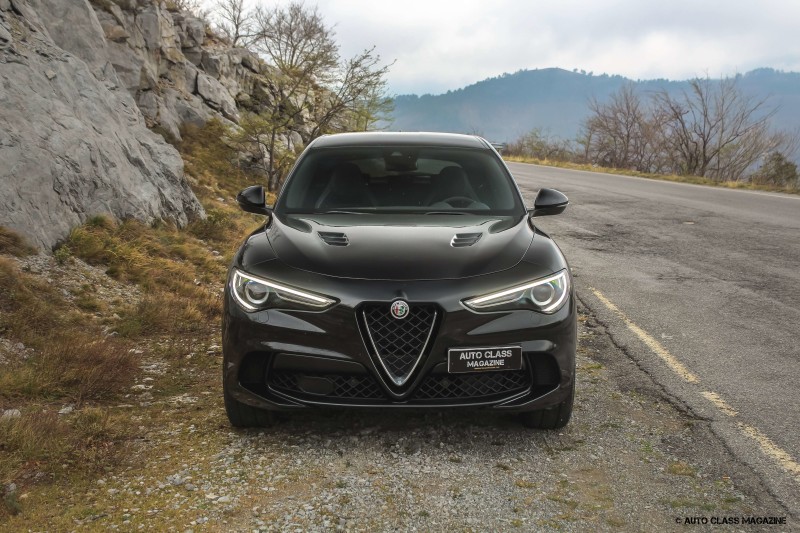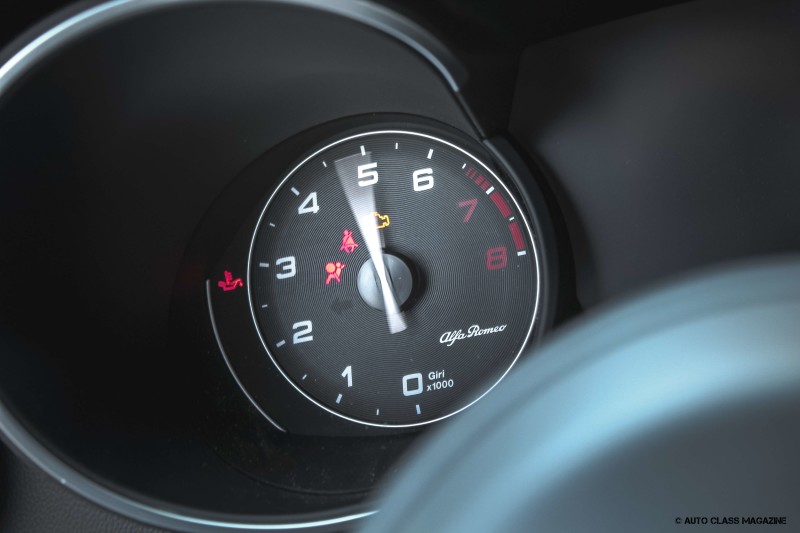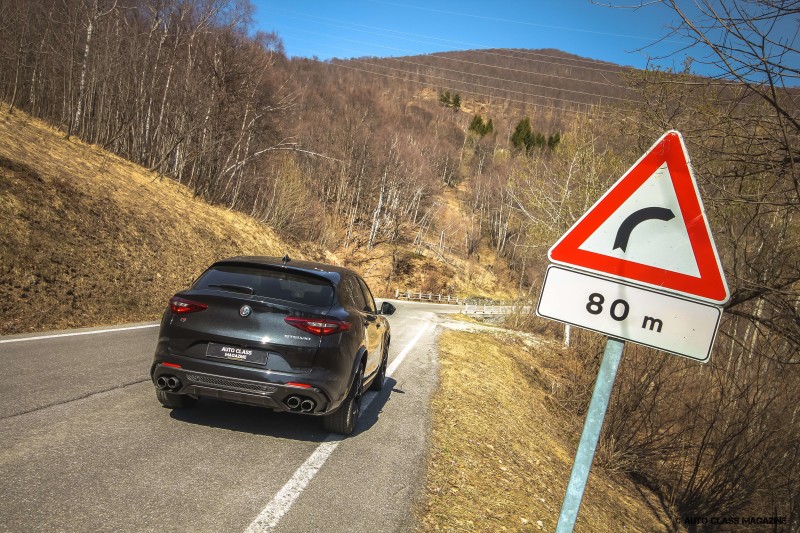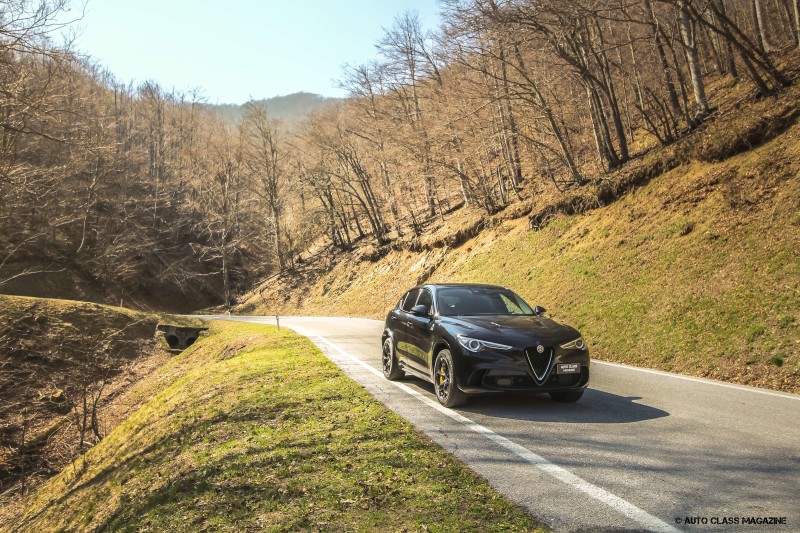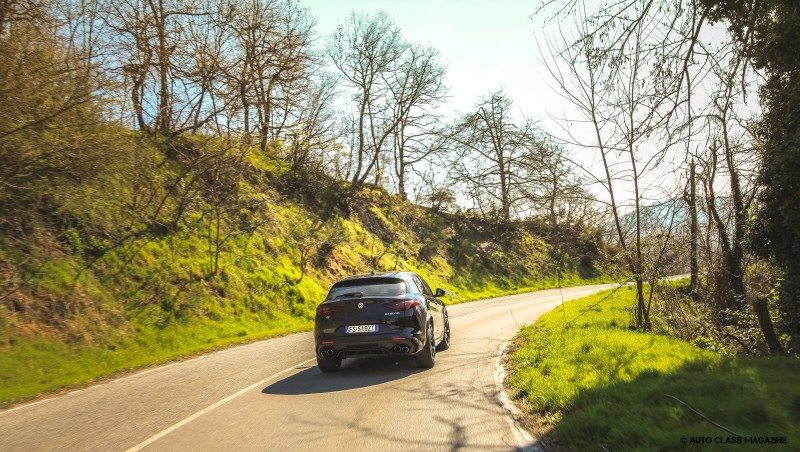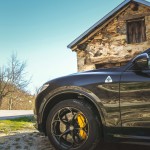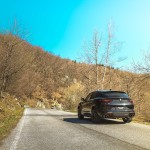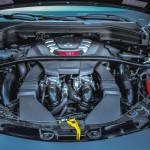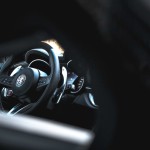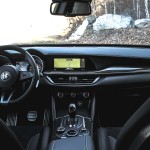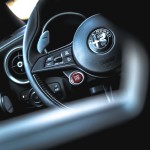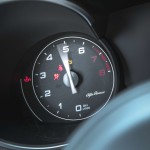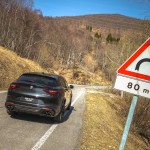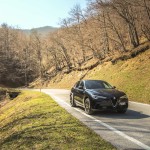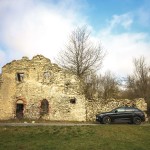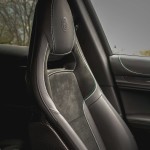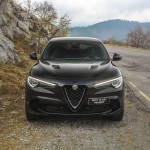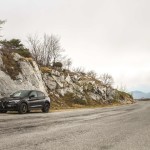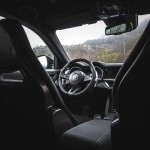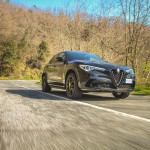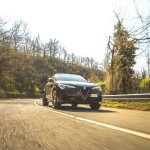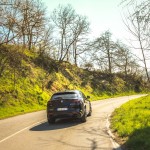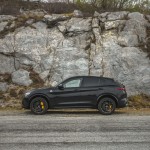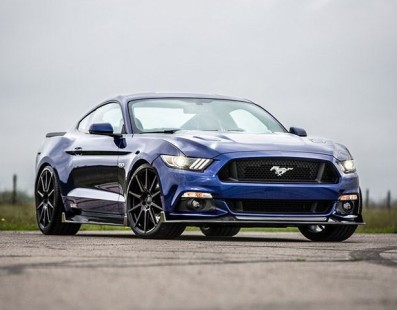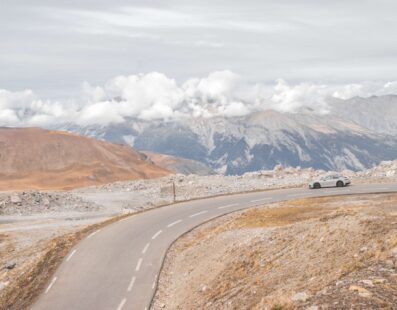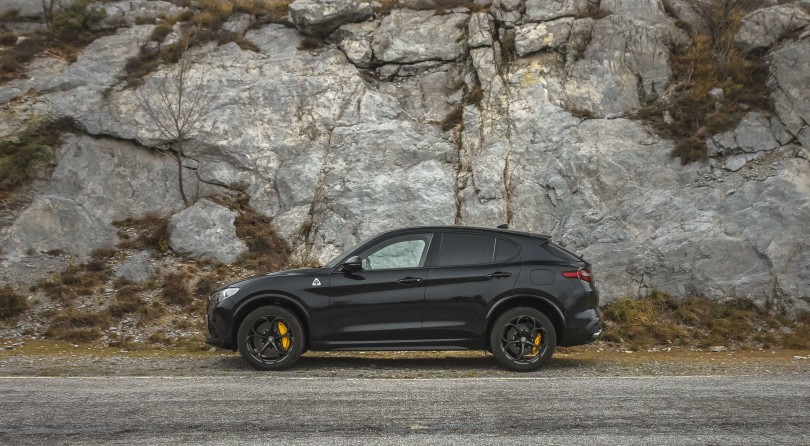
Alfa Romeo Stelvio Quadrifoglio: SUV-pocalypse Now
ALFA ROMEO STELVIO QUADRIFOGLIO
SUV-POCALYPSE NOW
Words by Alessandro Marrone / Photos by Gian Romero
Forget its ground clearance and all the mechanical wizardry that lives between our back and the road, you really feel every little change on the ground below.
They named it like the most famous mountain pass in Italy and undoubtedly one of the most coveted in the old continent: Stelvio. To be honest, if you had ever driven along the hairpin bends that join Bormio with Prato allo Stelvio, you should know well that despite the fact that it is undoubtedly a dense series of switchbacks piled up on top of each other, for what driving thrills concerns you’ll probably end disappointed, both for the huge traffic of the months in which the pass is clear from snow, both for the reduced width of the same road, which often forces you to stop in order to allow maneuvering the vehicles coming from the opposite direction – buses too. A high-sounding name that does not do justice to the first SUV coming from Arese, a project as ambitious as it is important for the Italian snake that has embarked on a path of rebirth with the Giulia sedan, with which it shares the platform called Giorgio. Some other names, other comparisons and a legacy that must be protected and preserved, but above all reinvigorated right now that Alfa Romeo has succeeded (first with the 4C and then with the same Giulia) silencing even the most ardent detractors. But then we didn’t want any Stelvio, we are interested in the exasperation of the concept of “meccanica delle emozioni”, the Quadrifoglio, the super SUV with over 500 horses and almost 300 per hour of top speed, a risky promise, a dice game with destiny beyond good and evil and which will trigger the apocalypse in seconds.
A week has already passed with the Stelvio Quadrifoglio and I have not yet got tired of squandering my savings at the fuel pump. Of course, these are sacrifices you face with pleasure, and while I give yet another drink to the always thirsty twin-turbocharged 6-cylinder, I begin to think about the next road to be added to the list of those already experienced. Today is also the day in which we remove a bit of dust accumulated in the past few days, making the brilliant black body of our model to shine in favor of the camera of our Gian Romero. Yes, because in addition of being functional and damn fast, the Stelvio Q also loves photos and it does not matter if the design of any diesel or petrol version has not been upset by exaggerated fenders or aerodynamic appendages that would make it immediately recognizable. The work done by the designers is aesthetically subtle, but still able to let a trained eye able to distinguish the slots on the bonnet, as well as the side skirts and the diffuser at the back housing two couples of tailpipes. The Stelvio’s dress remains clean, sober and perfectly able to doze unnoticed in the middle of any car park in the city center. The main exterior features remain those of the Giulia, especially at the front, while the tailgate with a small rear window sacrifices visibility, so you will be grateful opting for the rear view camera.
The dimensions of the Stelvio are among the main ingredients, in spite of the generous 20-inch rims, it is still an SUV that finds its space in the medium-small segment, with a total weight of 1,900 kg. The goodness of this focus during the design process reflects on what the car’s behavior is, not so much when you drive as a good family man, but rather when you decide to worship the green four-leaf clover, which soon will become your personal fetish. It’s stronger than me, not even time to get out of the garage and I am already in Race mode, with open valves thus making the exhaust tune even more scratchy, muttering while coasting and leaving the 2.9cc biturbo V6 to emit the classic bursts as I climb through the gears. Soon we realize that part of the extra fuel consumption compared to what is declared should be attributed to the fact that the Stelvio Quadrifoglio leads you to drive it like someone just escaped from the closest criminal institute, constantly revving hard and with those nervous movements that almost seem to incite an unbalance of the weights useful to understand where the chassis is able to go.
The truth is that its limits are really far from the point an average driver could reach, thanks to the fact that the 6-cylinder delivers 600 Nm of torque and with the fantastic traction keeping ‘em all for itself. Exactly, the Stelvio Q’s traction is something diabolical. Find me an SUV that behaves like a rear-wheel drive sports car, with the rear end that tells you when the huge 285s at the back start to struggle trying to grapple the asphalt and then call into question the exceptional self-locking diff, and if that’s not enough the front axle pulls you away from any situation without the slightest unbalancing of the car. This also happens in Race mode, ie with traction control disabled and with the knowledge that the slight skidding between first and second gear is a reflection of how the V6 spits out all its 510 horses in anger. Crazy, but it does not end here, because despite the fact that the Stelvio Q is the ideal weapon for traveling long distances quickly, it knows well that in the stomach of some mountain road, where the lack of traffic leaves the wildest instinct to take over, what becomes fundamental is represented by a handling worthy of allowing you to move smoothly to what, at the end of the day, is an SUV. Starting from the seating position, where we find ourselves immersed in the cockpit, placed in a sort of shell that has the mission of making us feel one with each dusty grain that covers the asphalt below us. Forget its ground clearance and all the mechanical wizardry that lives between our back and the road, you really feel every little change on the ground below and everything contributes to let your brain perceive how we can push ourselves further, with more violence and more desire to disintegrate what appears in front of us. Let the apocalypse begin.
In this case the carbon-ceramic braking system made of 390 mm discs with 6 fixed pistons at front and 350 mm with 4 fixed pistons at the rear allow you to take more confidence with the elasticity and the torque reserve of the 2.9 under the hood. You approach through the bends holding the gas down where with any other heavyweight would be ruinously late, strong pressure on the brake and maximum concentration on that magic wand draw-curves called steering wheel, another focal point of a car that now leaves no room for doubts. The connection with the road is epic, something otherworldly, especially considering the size, weight and height of the driver’s seat. It’s inexplicable, but I’m probably too focused not to get caught up by the excitement – at least no more than this – so I find myself looking at the photographer next to me for the umpteenth time and we’re both in disbelief. There may not be a moment of respite, this Stelvio is tireless and despite its supercar performance it doesn’t curse you when you put the wheels away from tarmac – provided you don’t think of using it as an old LR Defender. It has 5 seats and a lot of space in the trunk to allow you to carry all the photographic equipment, without having to choose between the available tripods and all the equipment that when you are dealing with 500 horses, inexorably end up in the trunk of the support car.
The constant amazement is painted on my face every time I act on the paddles at the wheel and I call into question a couple of gears, just to make sure I am immediately supported by the ideal soundtrack. The nose seems to point towards the sky, at least for a moment, but then the ubiquitous traction comes into play and catapults you with violence and with a progression and insistence as constant as to leave you not understanding where a gear ends and where the next one begins. In the meantime, a noise pit is spat out of the exhaust and you, careless of an imperfect road surface and the succession of actions necessary to keep the Stelvio in the middle of the road, remain impassive with your gaze halfway between the end of the bonnet and that imaginary point that moves as the next bend becomes visible and lets us guess which is the ideal gear to keep the engine tight – as if it was the case.
Another stop to put petrol in the tank of just 64 liters and we head on for some corners less famous than those of the Stelvio Pass, but certainly more suitable for a car capable of burning a 0-100 kph in 3.8 seconds and reach a top speed of 283 kph. This is the exclamation point that gives you an engine with Ferrari fingerprints all over the place, an engineering work that emphasizes how everything here is designed and wanted to emphasize emotions. It is also perceived in the cabin, enriched with carbon fiber, especially in the beautiful sports bucket seats (a € 4,000 option), while the ergonomic and functional side of the dashboard is equal to that of its German competitors, both for the excellent infotainment system that governs sat-nav, connectivity and audio system, both regarding the finishing touches and those details that tickle the eternal child in us, as in the case of the red button on the wheel that gives life to the engine. Next to the lever, through which it is also possible to go through the gears, there are a couple of control, the volume one, that for the multimedia system and the Alfa Romeo DNA, a selector that allows you to choose between the various driving modes available: Normal, All-Weather, Dynamic and Race. Do not ask me if I have noticed big differences, since I believe I have not even traveled 5 km without Race mode engaged. And don’t blame me, the Stelvio Quadrifoglio is a car capable of doing so many things, but above all it is able to give emotions signed by speed and adrenaline. It makes you want to leave for the simple pleasure of driving, it asks you to be pulled by the neck like you would with a traditional sports car, giving you feelings that are usually alien to the world of SUVs. Everything it does is able to do it faster than you would have expected and with a disarming ease that helps to differentiate it even more markedly from the Giulia Quadrifoglio Verde, strong of a lower weight, a lower center of gravity and pure rear-wheel drive that prefers the adoration of oversteer and of your trusted tire dealer. All this starting from around € 96,600 and up to € 115,000.
The Stelvio Quadrifoglio has entered my life like hundreds of other cars do every year, but it has managed to conquer me as few are able to do. It does that with a certainty that belongs only to a self-confident creature, of those you would like to remain secret lovers, but who soon turn into an obsession, a continuous desire to give life to that 6 cylinder and drive, possibly without a precise destination, an aspect that would mean the end of the games, at least for a moment. The more you know it, the more you realize that every attempt to stop and reflect becomes in vain, you can’t stay away from it and then you put in more petrol and absorbed by that tunnel of mechanical and sensorial adoration shaped by every shot on some winding mountain road, you realize that in front of you there’s all that matters, that pornographic steering wheel that seems to have an indissoluble connection with your hands and so you think back to the Stelvio Pass and you realize that the comparison that brings this homonymy is not right at all. The Stelvio Quadrifoglio can really be considered as the perfect SUV, but it also knows how to be a wonderful sports car and a practical car for the family. Perhaps, for such a masterpiece, it would have been the case to look at the Garden of Eden and leave the Stelvio Pass away. Maybe it would have been more up to the greatness of the Quadrifoglio. Maybe.
ALFA ROMEO STELVIO QUADRIFOGLIO
Layout – front-engined, all wheel drive
Engine – V6 cylinder 2.891cc twin-turbo
Transmission – 8-speed automatic gearbox
Power – 510 hp @ 6.500 rpm
600 Nm @ 2.500 rpm
Weight – 1.905 kg
Acceleration – 3,8 sec.
Top Speed – 283 kph
Price – from € 96.600

